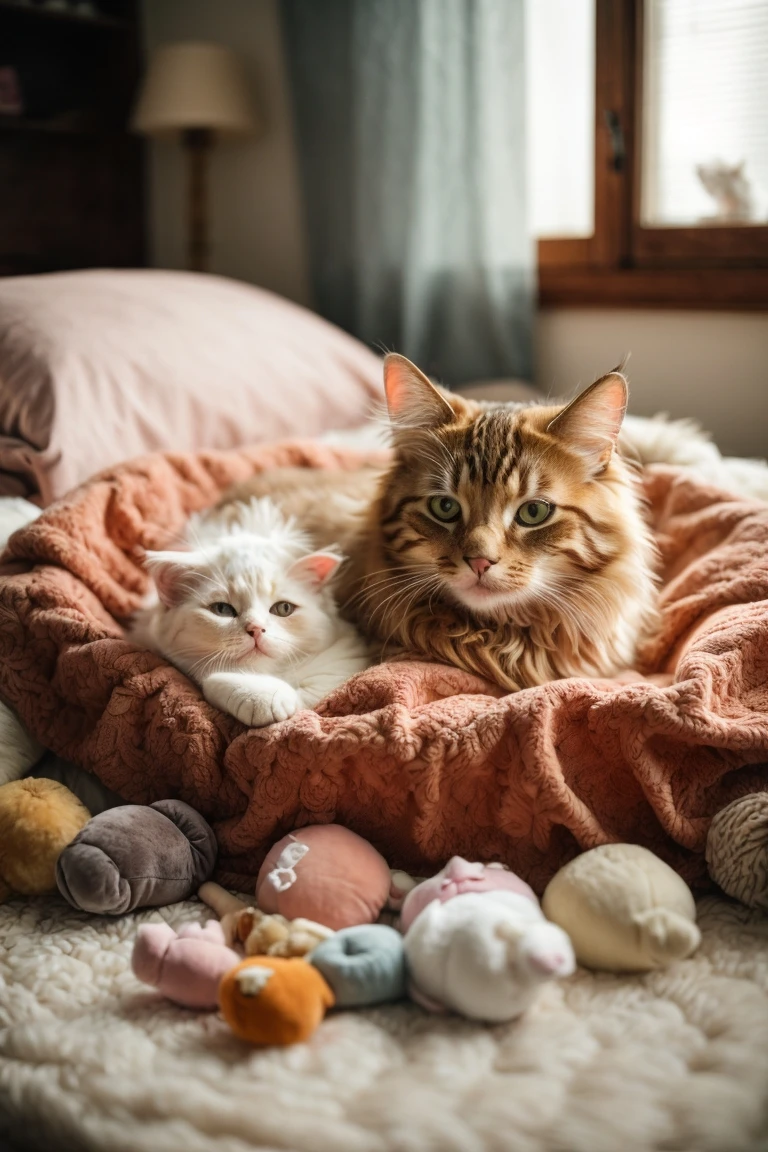Temperature Control for Newborn Kittens: Keeping Them Warm and Cozy

Among the many critical roles a mother cat plays is keeping vulnerable newborns warm. Kittens lack the ability to self-regulate body temperature for the first several weeks of life. You can provide valuable assistance by optimizing the environment for warmth and monitoring for chilling. With some thoughtful preparation and vigilance, you can help shelter the kittens from dangerous hypothermia during this delicate phase.
Why Temperature Control Matters
Maintaining an ideal ambient temperature is vital for newborn health for the following reasons:
- Kittens cannot regulate their body heat until around 3-4 weeks old.
- Hypothermia quickly sets in when kittens become chilled.
- Low body temperature in newborns can be life threatening.
- Warmth is essential for proper digestion and weight gain.
- Chilling diverts energy from growth and development.
By assisting mom in keeping conditions cozy, you enable kittens to thrive.
Preparing a Warm Birthing Area
Creating an appropriately warm space before the litter arrives helps prevent initial chilling:
- Location: Pick a small, enclosed room away from drafts and temperature fluctuations.
- Insulation: Provide plush bedding and nesting materials mom can arrange to her liking.
- Heating: Install a heating pad under half the nest, set to low.
- Temperature: Use a thermometer to maintain air temperature of 85-90°F.
- Lighting: Use dim, indirect lighting. Bright overhead lights can produce local chilling.
- Monitoring: Check surface and room temperatures twice daily to make adjustments.
Advance preparation takes theguesswork out of keeping conditions ideal.
Recognizing Hypothermia in Newborns
Watch for these signs that indicate dangerous chilling:
- Body temperature below 95°F (normal is 96-100°F)
- Feeling cool or cold to the touch
- Crying or mewling indicating distress
- Lethargy or listlessness
- Muscle tremors
- Piling or huddling with litter mates
- Inability to stand or move normally
Take rectal temperature if you suspect hypothermia for an accurate reading.
Safely Warming Chilled Kittens
If you detect hypothermia, gradually warm the kitten as follows:
- Create a makeshift incubator - line a box or carrier with heating pads under and around it.
- Place hypothermic kittens inside, away from direct contact with pads. Monitor the temperature.
- Or place kitten against your skin inside your shirt, keeping monitored and still. Your body warmth will transmit.
- Once rectal temperature reaches 95°F, return to nest to complete warming with mom.
- Avoid direct application of heat like hot water bottles - this risks overheating and burning.
- Consult a vet if chilling continues despite supplemental heat. Underlying illness may require evaluation.
With gentle care, most otherwise healthy kittens recover fully from mild hypothermia. Just take it slowly.
Maintaining Warmth as Kittens Grow
As kittens develop fur and mobility at 3-4 weeks, they require less intensive temperature support:
- Gradually lower ambient air temperature to around 80°F by week 4.
- Remove any direct supplemental heat like heating pads by week 5.
- Continue providing soft bedding and nesting areas for huddling.
- Monitor for any shivering or huddling, and increase warmth if seen.
- Ensure kittens are eating well - food digestion also generates warmth.
Adapt temperatures downward in a stepped approach as kittens increasingly self-regulate.
Signs of Overheating
While chilling poses the most immediate threat, overheating is also possible. Look for:
- Panting or breathing with mouth open
- Salivation or drooling
- Seeking out cooler spots away from litter mates
- Spreading out instead of huddling
- Rectal temperature over 101°F
If you notice signs of overheating, gradually adjust the temperature downward and ensure access to cooler spots off heated pads.
Working Together for Healthy Kittens
With mom caring for her kittens around the clock, you play a supporting role maintaining a well-regulated environment day and night. Your diligence spotting potential temperature issues promptly can make all the difference in keeping vulnerable newborns safe. With some thoughtful preparation and attentive monitoring, you and mom make an unbeatable nurturing team!